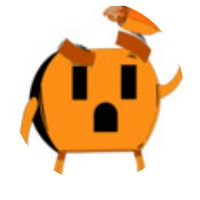Ensuring Safety: A Guide on How to Turn Off Your Home's Electrical Power Supply
Electricity is a powerful force that is dangerous if not handled properly. That's why it's important to know how to turn off the power to your home in case of an emergency.
At times, it becomes necessary to turn off your home's electrical power supply for various reasons such as conducting electrical work, replacing ceiling fixtures, troubleshooting, checking for a blown fuse or ensuring safety during emergencies.
Knowing how to safely disconnect the power to your home is crucial to prevent accidents and protection from an electrical or fire hazard. In this article, we will guide you through the step-by-step process of turning off your home's electrical power supply.
Step 1: Locate the Main Electrical Panel
The main electrical panel, commonly known as the circuit breaker panel or fuse box, is usually installed in a readily accessible area of your home, such as the basement, utility room, or garage. Locate this panel and ensure you have clear access to it.
Recommended Products
Step 2: Identify the Main Circuit Breaker or Main Service Disconnect
Within the electrical panel, look for the main circuit breaker box or main service disconnect switch. This switch controls the power supply to your entire home. It is often larger in size compared to the other circuit breakers and may have a higher amperage rating.
Individual circuit breakers control the power to specific circuits in your home. For example, there might be a circuit breaker for the kitchen, one for the laundry room, and one for the bedrooms.
Step 3: Understand the Panel Layout
Take a moment to familiarize yourself with the layout of the electrical panel. Each circuit breaker typically controls power to a specific area or appliance in your home. The breakers are usually labeled to indicate their corresponding areas of control, such as lights, kitchen outlets, or HVAC (Heating, Ventilation, and Air Conditioning) systems.
Step 4: Prepare for Power Disconnection
Before proceeding, inform all household members that you will be turning off the electrical power supply. Ensure that any electronic devices, appliances, and computers are safely shut down and disconnected from power sources. This will help to prevent any accidental shocks or short circuit. Consider using battery-powered lighting or flashlights for visibility during the power outage.
Step 5: Switch Off the Main Circuit Breaker or Main Service Disconnect
To turn off power supply, firmly switch the main circuit breaker or main service disconnect to the Off position. This action cuts off power lines to all circuits in your home. You may hear a distinct click or feel resistance when turning off the main breaker switch.
Step 6: Verify Power Disconnection
To ensure the power is successfully disconnected, test a few lights or outlets in different areas of your home by flipping their respective switches or using a plug-in device such as a voltage tester. To use a non-contact voltage tester, simply hold it near an electrical outlet or appliance. If the tester lights up, there is electrical current present. If the receptacles no longer receive power, it indicates a successful power disconnection.
Step 7: Dealing with Older Homes (Fuse Boxes)
If your home has an older electrical system with a fuse box instead of circuit breakers, the process is slightly different. In this case, you need to unscrew and remove the appropriate fuse(s) that correspond to the main power supply. Consult an electrician or refer to the manufacturer's instructions if you are unsure.
Step 8: Safety Precautions
While working with electrical systems, always prioritize safety. Once you have turned off the power, you should not turn it back on until you have finished working on the electrical system.
Avoid touching the inside of the electrical service panel or any exposed wiring. If you encounter any signs of damage, frayed wires, or unusual odors, contact a licensed electrician immediately. Do not attempt to repair or inspect electrical components yourself.
Step 9: Restoring Power
Once you have completed your electrical repairs or addressed the situation that required the power to be turned off, you can restore the electrical power supply by switching the main circuit breaker or main service disconnect back to the "On" position.
Conclusion:
Knowing how to turn off your home's electrical power supply is an essential skill for homeowners. By following these step-by-step instructions and taking necessary safety precautions, you can ensure a safe environment and effectively manage electrical repairs or emergencies.
Label the circuit breakers for your entire house so that you know which one controls which circuit for future purposes. Remember, if you are uncertain or uncomfortable with any electrical tasks, it is always best to consult a licensed electrician or utility company for professional electrical service.
Recommended Products
Receive special deals and more, right to your inbox
Receive special deals and more, right to your inbox





